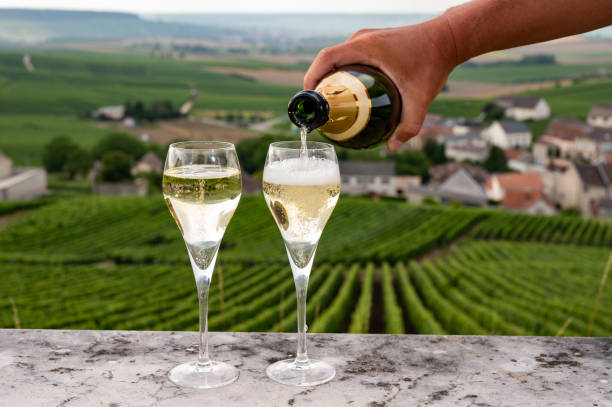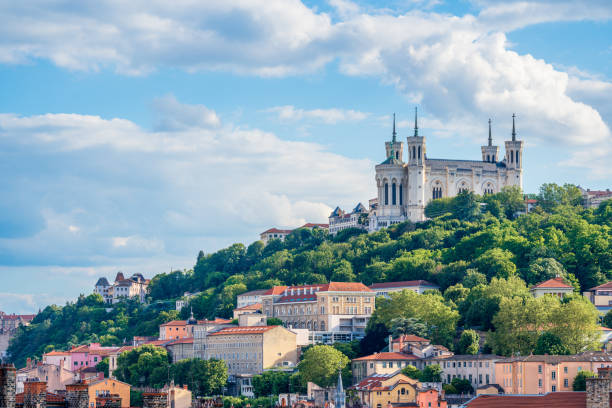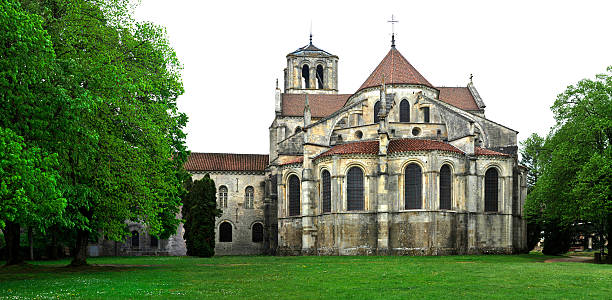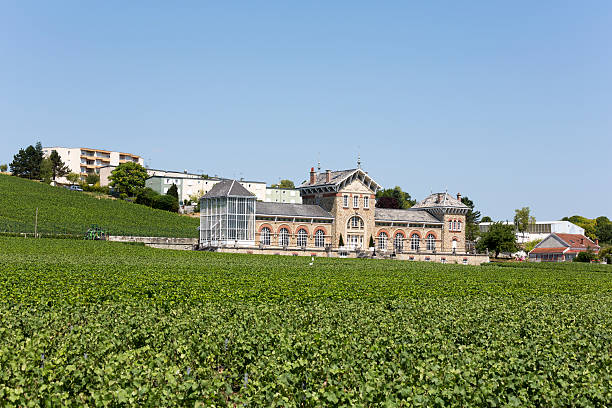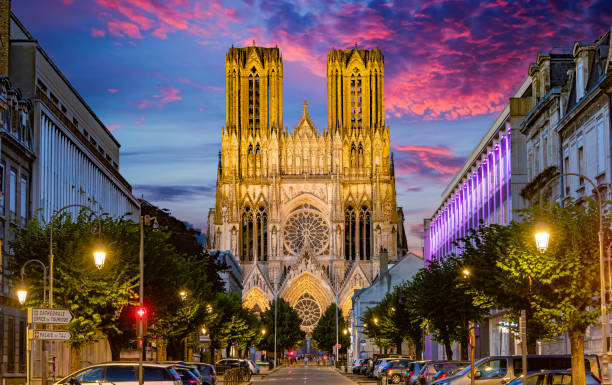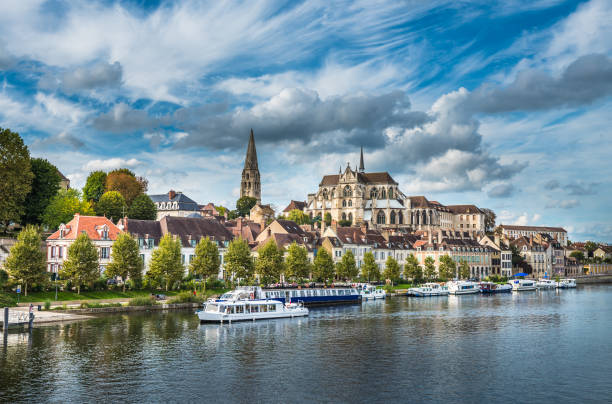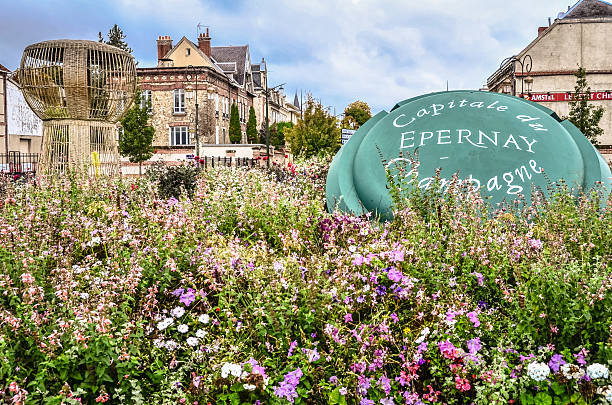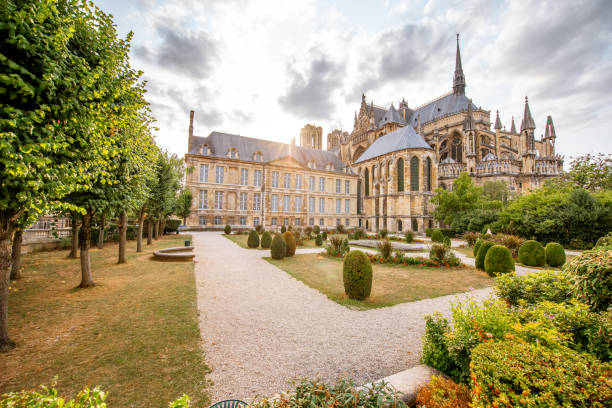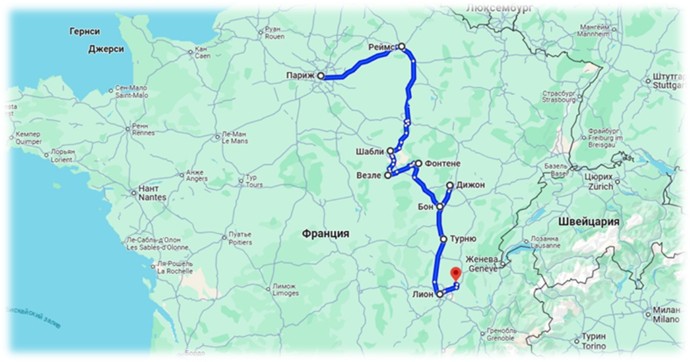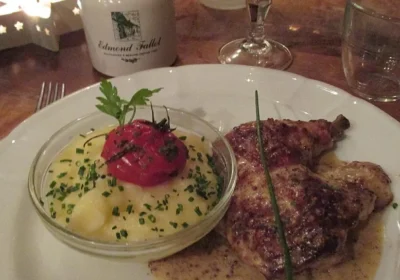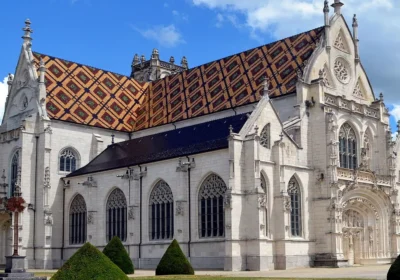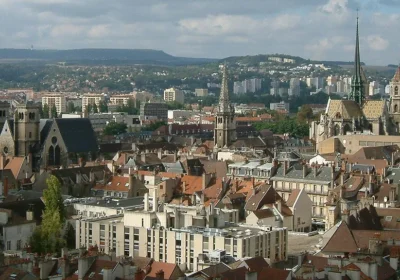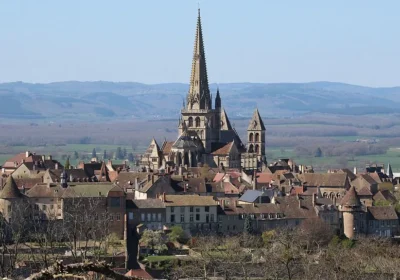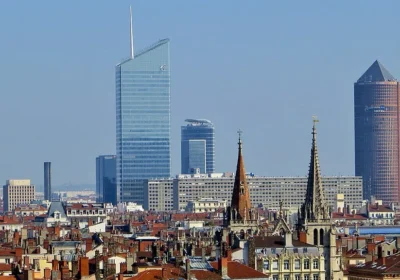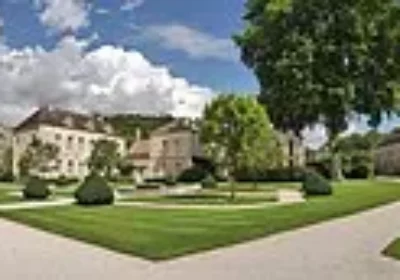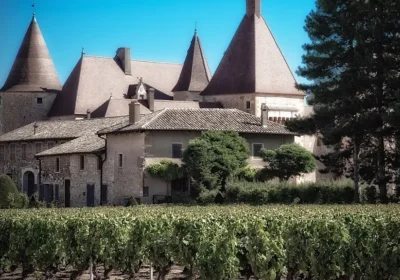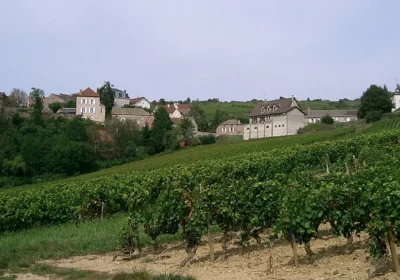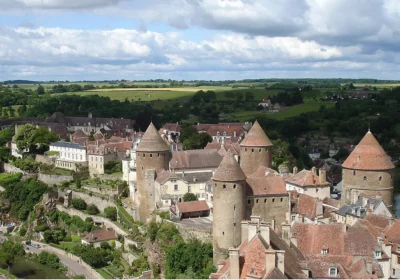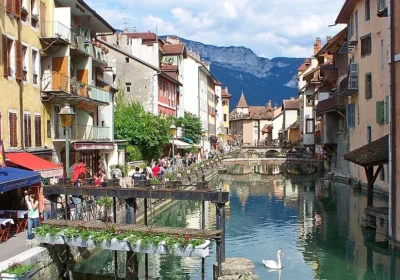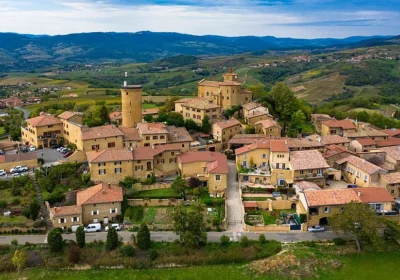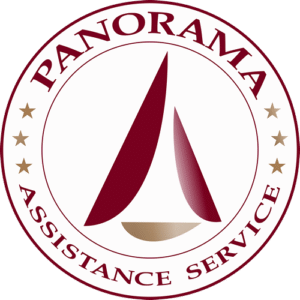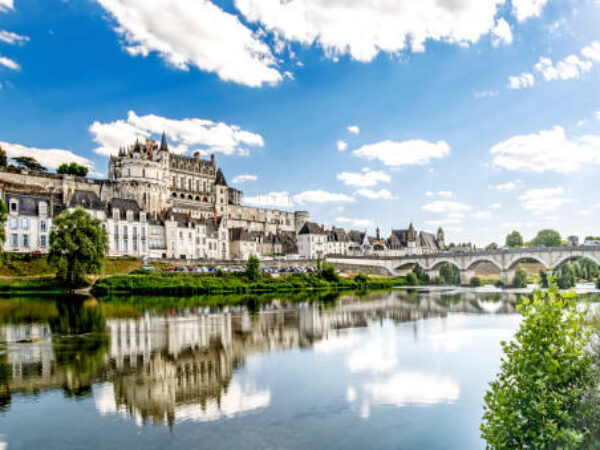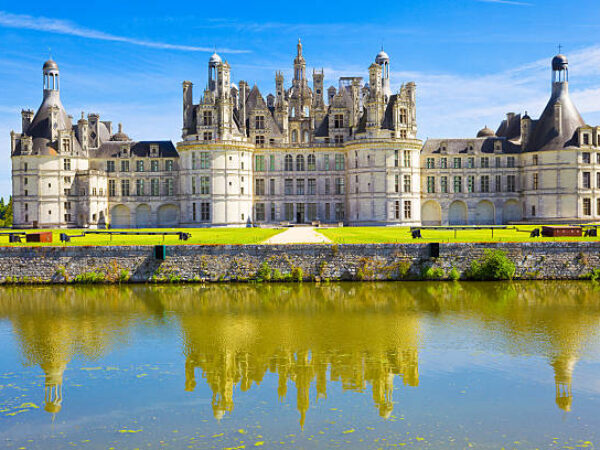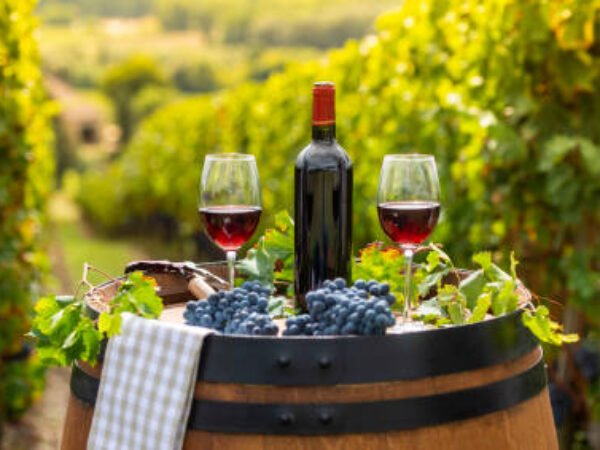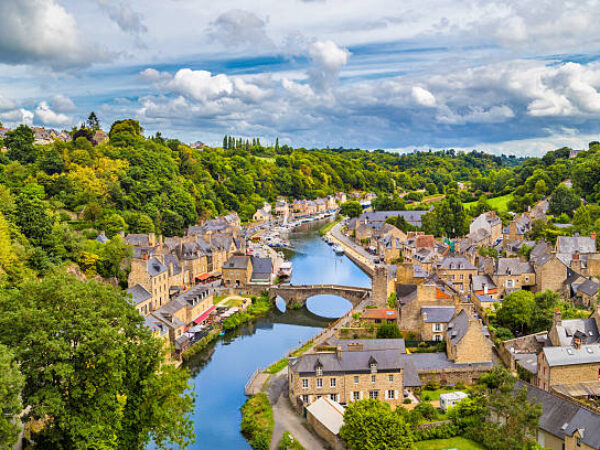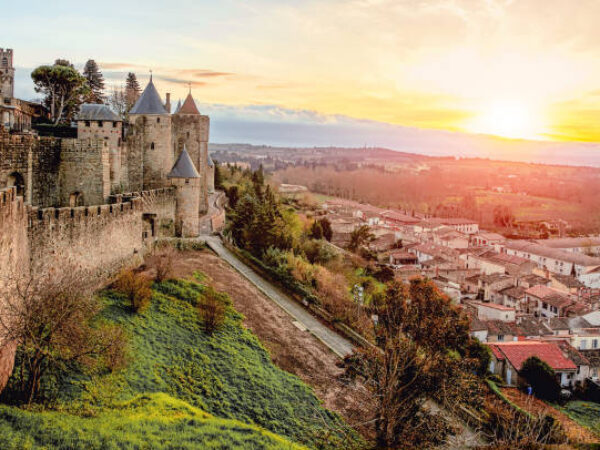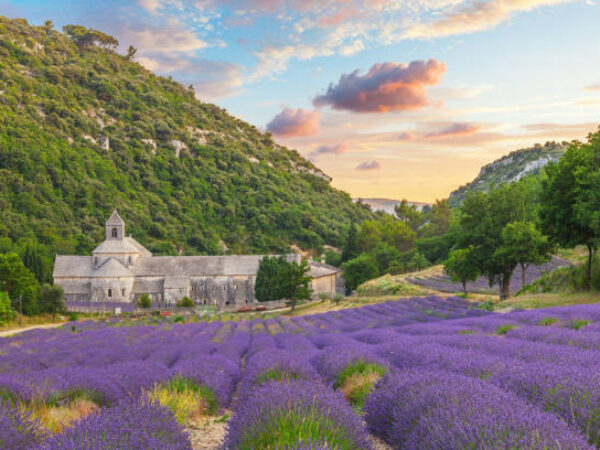Loading available options...
- Duration:9 days 8 nights
- Tour Type:Cultural and thematic tours, Wine tours
The number of days can also vary depending on the client's preferences.
The cost of guide and driver services, as well as hotel accommodations, are available upon request.
Tastings and entrance fees are payable on site.
Highlights
- Oak groves and endless vineyards
- Gallo-Roman ruins and abbeys
- Unique hotels and restaurants
- Champagne, Gevrey-Chambertin, Cassis, cheeses and mustard
Itinerary
Expand allDay 1. Champagne
Program:
- Reims
- Pommery Champagne House
- Epernay
- Moët & Chandon Champagne House
Description:
Arrival in Paris on a morning flight. Start of the program.
Transfer to the Champagne region.
Visit to Reims. Paris-Reims Airport is 140 km away, a 1 hour 30 minute drive.
Reims is home to three UNESCO World Heritage Sites: Reims Cathedral, the Basilica of Saint-Rémi, and the Palais de Tau.
Lunch.
Visit to Pommery Champagne House in Reims, tasting available upon request.
Pommery Brut Royal Champagne.
Trip to Epernay. Reims – Épernay – 30 km, 35 minutes drive.
Épernay is the capital of champagne, home to most of the champagne cellars.
Visit to the famous Moët & Chandon champagne house, the largest producer. Tasting of two Brut Imperial champagnes upon request.
Transfer to the hotel. Check-in.
Dinner.
Day 2. Burgundy
Program:
- Troyes
- Auxerre
- Chablis
Description:
Departure from the hotel. Transfer to the Burgundy region. Burgundy is located in the heart of France. Burgundy's landscapes are considered some of the most stunning in all of France. Burgundy is also renowned for its excellent wines and gastronomy.
Visit to Troyes.
Hotel - Troyes - 125 km, approximately 1 hour 20 minutes.
Walk and explore the ancient 16th-century houses in Troyes.
Transfer to Auxerre.
Troyes - Auxerre - 75 km, approximately 1 hour 15 minutes.
Lunch.
Auxerre is perhaps the most beautiful town in provincial Burgundy, exquisitely blending the Middle Ages, the Renaissance, and the 19th century. and modernity.
Transfer to Chablis, visit the town, and taste nine Grand Cru Chablis wines with a sommelier upon request.
Transfer to the hotel and check-in.
Chablis – hotel – 42 km, approximately 40 minutes.
Dinner.
Day 2. Alternative program
Program:
- Ancy-Le-Franc Castle
- Tanlay Castle
- Burgundy Wineries
Description:
Also recommended for a visit in northern Burgundy is Ancy-Le-Franc Castle (Château d'Ancy-Le-Franc). This castle is considered the finest
Renaissance palace in Burgundy. The park was designed by Le Nôtre, the creator of the Gardens of Versailles and the French style of garden design.
Tanlay Castle (Château de Tanlay) is a gem of Renaissance architecture, developed from a medieval castle. Today, part of the castle is a museum, and part is private.
Burgundy's Wine Regions Burgundy is home to six wine-growing regions:
- Chablis (in northern Burgundy, near Auxerre),
- the famous wine route (Bon-Dijon), which includes the Côte de Nuits and Côte de Beaune,
- the wines of Mâcon and Châlons (both of which are a southerly continuation of the wine route),
- and the southernmost part of Burgundy is the Beaujolais.
The national road runs from northeast to southwest for about 100 km in Burgundy, with famous wineries on either side. The higher the slope from the road, the higher the quality of the wine produced. The southern part of the wine route is primarily white wines, while the northern part is red.
Two major cities, the two capitals of Burgundy, mark the boundaries of this route: Dijon and Beaune.
Day 3. Vézelay and Fontenay Abbeys
Day Program:
- Vézelay Abbey
- Fontainay Abbey
- Alesia Museum Park
Description
Visit to Vézelay Abbey.
Hotel pickup.
Hotel – Vézelay Abbey – 12 km, approximately 14 minutes drive, then climb the hill where the abbey is located.
Vézelay was one of the largest and richest Benedictine abbeys in medieval France, founded in the 11th century on the supposed site of Mary Magdalene's tomb.
Lunch.
Transfer to Fontenay Abbey – one of the oldest and best-preserved monasteries of the Cistercian order. Vézelay Abbey to Fontenay Abbey – 64 km, approximately 1 hour 10 minutes.
Along the way, a tasting of Burgundy's most famous cheese, Epoisse, is available upon request.
After Fontenay, transfer to the Alesia Museum Park (MuseoParc Alesia).
Fontenay Abbey to the Alesia Museum Park – 16 km, approximately 16 minutes. Alesia is a historical and archaeological complex that reconstructs the events of 52 BC (the final defeat of the Gallic tribes by Caesar's legions).
Transfer to Beaune.
Alesia Museum Park to the hotel in Beaune – 82 km, approximately 1 hour.
Accommodation at the hotel.
Day 3. Alternative program
Day Program:
- Semur-en-Auxois
- Châteauneuf-en-Auxois
- Château Pommard Wine Estate
Description
Also recommended for a visit in northern Burgundy.
Semur-en-Auxois. An incredibly beautiful medieval hilltop town with fortifications and towers dating from the 13th to 15th centuries. It was once an impregnable fortress.
Châteauneuf-en-Auxois, a village included in the guide to the 100 most beautiful villages of France, includes a visit to the 12th-century castle perched on a cliff (450 meters above sea level). The Château Pommard winery is located in the Côte de Beaune wine region. Built in 1726, Château de Pommard is today one of the largest estates in Burgundy. The vineyards cover 20 hectares, with soils ranging from clay to limestone.
Day 4. Trip to Dijon, the capital of Burgundy
Day Program:
- Dijon
- Côte d'Or - "Gold Coast"
- Gevrey-Chambertin
- Château du Clos de Vougeot
- Wine tasting in Gevrey-Chambertin
Description
Beaune - Dijon - 48 km, approximately 40 minutes.
Dijon is an elegant French provincial town, blending medieval and royal architecture from the heyday of the French monarchy with modern times. Visit the Dijon Museum of Fine Arts (Musée des Beaux-Arts de Dijon). Lunch.
Depart Dijon, drive along the Red Wine Route. Dijon - Gevrey-Chambertin - 14 km, approximately 25 minutes.
The Côte d'Or region, also known as the "Gold Coast," is considered the heart of Burgundy's wine region. The wine-growing regions here are the Côte de Nuits (south of Dijon) and the Côte de Beaune (near Beaune). Visit the village of Gevrey-Chambertin. This wine was considered Napoleon's favorite.
Gevrey-Chambertin – Château du Clos de Vougeot – 7 km, approximately 10 minutes by car.
Visit the Château du Clos de Vougeot. The famous Confrérie des Chevaliers du Tastevin (Brotherhood of Knights Connoisseurs of Wine) moved here in 1945.
A wine tasting in Gevrey-Chambertin can be complemented by a tasting of regional cheeses at the cheese shop in Fixin. You can end the day with a tasting of the famous cassis liqueur at the Cassisium Museum in Nuits Saint-Georges.
Tastings can be arranged upon request.
Return to Beaune. Dinner. Overnight at the hotel.
Day 5. Bon
Day Program:
Description
Tour of Beaune. Beaune was once the capital of a duchy no less powerful than medieval France. Beaune's most striking landmark is the Hospice, built in the 15th century.
Lunch.
Visit to the Patriarche Wine Cellar, one of the finest cellars in France with rare wines. You can also visit the Wine Museum in Beaune, located in the former residence of the Dukes of Burgundy.
Followed by a trip to the Meursault winery.
Beaune to Meursault – 10 km, approximately 15 minutes drive.
Or a visit to the private Fallot Dijon mustard factory in Beaune. A visit to the museum, where you can learn all about the history of mustard, and a touch zone where you can interactively trace all the stages of mustard production, from seed to jar.
Return to your hotel in Beaune or the surrounding area. Dinner.
Day 6. Truffle Farm and Tournus
Day Program:
- L'Or des Valois Truffle Farm
- Atelier de la Bulle Veuve Ambal in Montagne de la Beaune
- Tournus
- Fallot Dijon Mustard Factory
Description
Departure from the hotel, transfer to the L'Or des Valois truffle farm.
Beaune – truffle farm – 24 km, approximately 35 minutes.
Introduction to truffles and their characteristics, a silent truffle hunt with dogs, and lunch.
Afterwards, transfer south from Beaune to explore Southern Burgundy.
En route, visit the Atelier de la Bulle Veuve Ambal in Montagne de la Beaune (5.3 km from Beaune, approximately 10 minutes).
Exploring the city of Tournus. Burgundy Crémant workshop – Tournus – 54 km, approximately 35 minutes drive.
Tournus is a small, well-preserved medieval town.
The abbey church of Saint Philibert, located in Tournus, began construction at the beginning of the first millennium.
Transfer to a hotel in Lyon or the surrounding area.
Tournus – Chateau de Bagnols – 90 km, approximately 1 hour drive.
Hotel check-in. Dinner.
Day 7. Burgundy
Day Program:
- Chateau de Cormatin
- Cluny Monastery
- Cluny and Citeaux
- Mâcon
Description
Continuing our exploration of Burgundy. Visit to Château de Cormatin. Hotel – Château de Cormatin – 86 km, approximately 1 hour 5 minutes drive. Château Cormatin is a true gem of Burgundy, home to the famous golden cabinet of Saint Cecilia and a rare example of coffered ceilings.
Visit to the Christian pilgrimage center and monastery of Cluny.
Château de Cormatin – Cluny – 14 km, approximately 15 minutes drive.
Since the 10th century, Burgundy has been home to the main centers of monastic reform in the Christian West – Cluny and Citeaux. The Benedictine monastery in Cluny was the largest Christian church until the construction of St. Peter's Basilica in Rome.
Visit to Mâcon.
Cluny – Mâcon – 23 km, approximately 25 minutes. Mâcon is another wine center of France.
Return to your hotel in Lyon or the surrounding area.
Rest. Overnight at the hotel.
Day 8. Rhône-Alpes
Day Program:
- Chateau de Fléchères
- Vonnas
- Georges Blanc Gastronomic Village
- Bourg-en-Bresse
- Brou Monastery
- Perouges
Description
Explore the Rhône-Alpes region, which was once an independent region but merged with Auvergne in 2016 as part of the territorial reform to form the Auvergne-Rhône-Alpes region. Visit to the Château de Fléchères.
Hotel – Château de Fléchères – 22 km, approximately 30 minutes drive.
Château de Fléchers is located in the Ain department and is the largest castle open to the public near Lyon.
Transfer to the town of Vonnas for a visit to the gastronomic village of Georges Blanc. Château de Fléchers – Village Georges Blanc – 33 km, approximately 35 minutes.
Lunch. In Village Georges Blanc, you can try the famous Bresse poularde and visit one of the five best wine cellars in the world.
After lunch, drive to the town of Bourg-en-Bresse and visit the Royal Monastery of Brou and its municipal art museum.
Village Georges Blanc – Bourg-en-Bresse – 22 km, approximately 30 minutes. The Royal Monastery of Bourg-en-Bresse is a masterpiece of Flamboyant Gothic architecture in the Brabant style. Transfer to the medieval town of Perouges.
Bourg-en-Bresse – Perouges – 41 km, approximately 45 minutes.
Perouges is today one of the most beautiful medieval villages in France. "The Three Musketeers" was filmed here several times.
Return to your hotel in Lyon or the surrounding area. Dinner.
Day 9. Lyon
Daily Program:
- Lyon
- Notre Dame de Fourviere Basilica
Description
Pick-up from your hotel and transfer to Lyon, the capital of the Auvergne-Rhône-Alpes region. Distance from hotel to Lyon: 33 km, approximately 1 hour.
Walking tour of Lyon.
All of Lyon is a UNESCO World Heritage Site. It is the second largest city in France, yet has retained its provincial charm.
Lyon is home to 24 museums.
One of the city's most recognizable symbols is the Notre Dame de Fourviere Basilica, atop Fourviere Hill, built in a combination of neo-Byzantine and neo-Gothic styles.
Lunch at a traditional Lyon restaurant, a bouchon.
End of the program.
See more excursions
You might also like...
Login to use
The Great Journey
Location
Duration
The castles of the Loire Valley, the eighth...
Login to use
Traveling through the Loire Valley
Location
Duration
Magnificent royal castles, mysterious troglodyte dwellings, exceptional wines,...
Login to use
Southwest France Wine and Food Tour
Location
Duration
Medieval chateaux and endless beaches, world-famous wines of...
Login to use
Travel “Normandy – Brittany”
Location
Duration
The rugged beauty of Breton nature, Mont Saint-Michel...
Login to use
Carcassonne and the Land of the Cathars
Location
Duration
Home See more excursions Ним Окситания Франция Ним...
Login to use
Traveling through Provence
Location
Duration
Home For Booking Need help? Talk to an...














